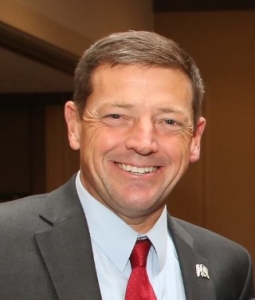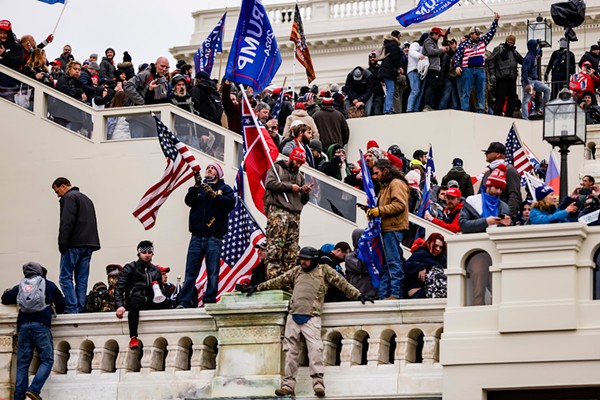Richard Debs was President of the United Auto Workers union local 1776. (No relation to Eugene V. Debs, the union organizer and socialist from the early 20th Century.) Debs had been the President of the local for 15 years in 1988. 1776 was the local representing the workers at the General Motors Willow Run assembly plant near Ypsilanti, Mich., where the Chevrolet Impalas were made.
Debs liked that job. And authorities suspected he was willing to harm people to keep it. But before I get into that, a little more about the Willow Run plant.
Willow Run was a massive industrial complex first developed by Ford during World War II to make the B24 Liberator bombers. At that time it was the largest assembly line facility in the world. At its peak it turned out a bomber every 55 minutes and was home to Rosie the Riveter. (The model for the iconic picture worked at the plant.)
After the war GM acquired the complex, GM expanded and converted it to an assembly plant and another plant to build the GM Hydra-matic transmissions.
During the waning halcyon days of the American auto industry, as president of a local, Debs had considerable power over a fiefdom that was comprised of all the workers at the assembly plant. Debs did not work at the plant, but rather administered the local from an office in a union building near the plant.
Because all GM plant jobs required UAW membership, Debs had the ability to influence hiring and to disperse jobs. He also had political power in the local community that derived from his position. There were also ample opportunities for corruption and graft to those so inclined.
Periodically UAW local officers have to stand for reelection, and there was to be an election in the spring of 1989. Debs was being challenged for the presidency by two other local members, Jesse Gray and Bob Harlow. Despite Debs 15 years as president, he was not universally well liked. Also he had recently been charged albeit acquitted in a Federal corruption case involving a local judge. (The judge and several others were convicted.)
In the fall of 1988, the FBI learned from a confidential informant (CI)that Debs had been attempting to hire some men to dissuade by violence Gray and Harlow from running against Debs. The source knew the identities of some of the men that had been approached by Debs, but he/she did not know whether anyone had agreed to Debs’ plan.
Although the CI’s information was deemed creditable, it was not clear whether Debs had progressed beyond the solicitation stage, and we did not want to jeopardize the CI.
It was decided the best course of action was to advise the Michigan State Police (MSP) and the potential victims of the information. We arranged to have Jesse Gray and Bob Harlow come to the MSP Post in Ypsilanti which was the Post responsible for the Willow Run complex.
Gray and Harlow were apprised of the alleged threat. They were also advised to take some precautions like avoiding predictable routines and varying the routes to and from work.
About a month after the meeting with Gray and Harlow, Gray was shot in the neck while driving to work in the early morning of December 29th. Gray was not killed, but multiple shots had been fired at his truck from a pickup as it passed him. Gray was unable to give more than a general description of the pickup. He thought there was more than one person in the pickup, but he could not provide any descriptions.
MSP did the crime scene investigation and was able to recover several spent 9mm slugs from Gray’s vehicle including the one that struck Gray. Although Gray’s wound was not life threatening, it was serious, and it had to be concluded the shooter was trying to kill Gray.
As a result of the shooting, Gray dropped out of the race for presidency of the UAW local. Bob Harlow decided to continue his effort to unseat Debs, but he confided that following our warning, he had varied his route to and from work. Gray had not.
MSP and the FBI began an investigation into the shooting. We interviewed Debs. He denied any involvement in the shooting, and said he and his wife were in Cleveland visiting family at the time of the shooting. Debs also denied soliciting anyone to do harm to either Gray or Harlow.
During the investigation we were hearing rumors about Debs having unusually close relationships with young men and boys. (That would foreshadow some future events.)
We interviewed one of the young men. (I’ll refer to him as John.) John said that Debs had befriended him and had given him money and gifts, but denied being asked by Debs to do harm to anyone. When asked about his whereabouts at the time of the shooting, John said he was in Cleveland with Debs.
John elaborated that late on the night of December 28th, Debs and his wife came to John’s apartment. Debs said he would pay John to drive them in Debs’ car to Cleveland.
They drove to Cleveland and arrived early in the morning on the 29th. Debs had John drop them off at a house. Debs told John to pick them up at 11:00 am. When John picked them up, Debs had John drive them back to Michigan. Debs never explained to John why he and his wife needed to go to Cleveland late at night and a few hours later return home.
As an investigator you question coincidences. Why would Debs seemingly on the spur of the moment decide to travel to Cleveland hours before the shooting of Jesse Gray and then return only hours after the shooting? I remembered an old adage from the Book of Proverbs: “The wicked flee when none pursueth….” (Proverbs 28:1)
In April, Debs was defeated by Bob Harlow for the presidency of local 1776.
It had been months since the shooting, and we weren’t any closer to identifying the shooters or tying Debs to the shooting. MSP had to cut back on their involvement. We had done most of the investigation and without new leads a resolution didn’t seem too promising.
We had interviewed some of the individuals the CI said had been approached by Debs to dissuade Gray and Harlow from running against him. All of them had been eliminated as the actual shooters.
We were able to confirm that 4 of the 5 men had been approached by Debs. He offered jobs and/or money to violently dissuade Gray and Harlow from running against him. All 4 had refused Debs’ offer. There hadn’t been any further discussion as to what specific violence Debs had in mind.
I came away from those interviews not enthusiastic with how creditable these 4 men would be to a jury. When you try to recruit some guys to commit felonies of violence, you don’t go looking for Eagle Scouts.
When I interviewed the 5th man Debs reportedly had contacted, he said Debs had made the same proposal to him that he made to the others. The 5th man, Larry Poore, said his initial response to Debs was he didn’t even know Bob Harlow. So Debs gave Poore a photo of Harlow. Poore told Debs he would think about it, but he said he never had any intention to do anything. Later he told Debs he didn’t want to do it.
As I was getting ready to leave Poore’s home, he asked me if I wanted the photo Debs had given him of Harlow – I hadn’t thought to ask. The photo had potential to be a great windfall. I very carefully placed the photo in an evidence envelope. The next day I sent the photo to the FBI Lab with a request that it be examined for fingerprints. Any latent fingerprints found would be compared with the fingerprints of Poore and Debs. I wasn’t optimistic, but it was worth a shot.
When I received the lab report, it stated there were only two legible fingerprints on the photo. One was Larry Poore’s, the other was Richard Debs. I felt like I had just drawn to an inside straight. We now had physical evidence to corroborate Poole’s account of Debs’ solicitation which indirectly corroborated the other 4 men’s similar statements.
I knew we still couldn’t prove Debs had any connection to the shooting of Jesse Gray, but we could show that Debs prior to the shooting had attempted or conspired to commit violence against Harlow and Gray. Because this conspiracy’s goal was to impede UAW members from running for office it denied the member electorate a choice. Also because a conspiracy was alleged the rules as to hearsay evidence didn’t apply to statements in furtherance of the conspiracy.
In late fall, 1989, a Federal Grand Jury returned a 4 count indictment charging Debs under the Hobbs Act (18 USC 1951) with having “solicited 5 different men to do wrongful violence against Bob Harlow and Jesse Gray” in an attempt to frighten them away from running against Debs for the UAW local presidency. (The Hobbs Act was enacted as a statute to combat racketeering in labor-management disputes and corruption directed at members of labor unions.)
A 4th count of the indictment actually charged that “Debs caused Jesse Gray to be shot for the purpose of inducing him and other union members not to oppose Debs in the 1989 election.” We knew we would have difficulty proving Debs involvement in the shooting, but by charging it, we could make the jury aware of the shooting and Debs’ coincidental “fleeing” to Cleveland.
Pursuant to the indictment we arrested Debs at his home. He was in bed and on his nightstand was a 38-caliber revolver. When we arraigned Debs, the government asked for detention, but he was released on a $25,000 bond despite the nature of the charges.
In September 1990, Debs pleaded guilty to one count of the indictment. Debs was allowed to stay on bond until his sentencing.
In November while awaiting sentencing, Debs was arrested and charged with 1st degree criminal sexual conduct after allegedly forcing a 12-year-old boy to perform oral sex on him. Now he would await sentencing in jail.
In January, Debs was sentenced to 4 years for the Hobbs Act violation. Ultimately Debs pleaded guilty and was sentenced to 15-30 years on the sex charge. Debs remained in prison until he died of natural causes.
Debs never admitted his involvement in the shooting of Jesse Gray, and the shooter(s) were never identified. But thanks to the Hobbs Act, at least as far as Debs was concerned, justice was served.




